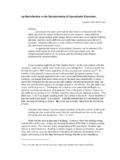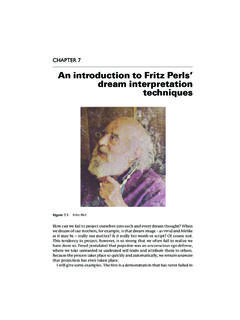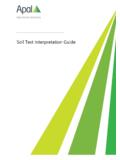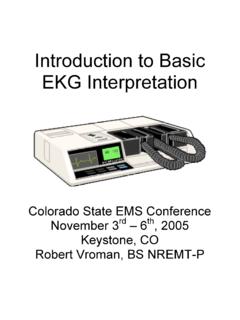Transcription of EKG Interpretation WWW.RN.ORG® Reviewed …
1 EKG Interpretation Reviewed August 2017, Expires August 2019 Provider Information and Specifics available on our Website Unauthorized Distribution Prohibited 2017 , , , LLC Developed by Melissa K. Slate, RN, BA, MA Objectives: By the end of this continuing education module the clinician will be able to: 1. recognize common characteristics of abnormal heart rhythms 2. accurately identify abnormal heart rhythms 3. differentiate between life threatening and non-life threatening EKG Purpose The purpose of this continuing education module is to give the clinician a review of EKG Interpretation and the recognition of life threatening cardiac arrhythmias.
2 The basic premise of EKG Interpretation lies in the ability to recognize patterns. This is a skill that is developed through practice and variety. In other words, you need to see the same patterns over and over again, but you also need to see variants in the pattern to be able to recognize subtle differences. It is important to review EKG strips in a systematic way and not take any shortcuts as this can lead to missing important details or a life threatening arrhythmia. Then, the key becomes regular practice to maintain the skills that are developed. Once you find yourself in an emergency situation, you will have less than a minute to analyze a heart rhythm and act accordingly.
3 It is important to remember that while the EKG provides a picture of how the heart is doing electrically, it does nothing to tell us how the heart is able to pump blood through the body. Always treat your patient, not the rhythm strip. The Conduction System and Nodal Pathways The electrical conduction system of the heart is a system of interconnected structures that allow the passage of electrical impulses through the heart muscle. These electrical impulses are generated in a specific sequence, and are the impulses that generate the wave tracing that comprise the cardiac rhythm strip.
4 This specific sequence gives us the basic foundation by which rhythm strip analysis in conducted. The sinoatrial node (SA) is the primary pacemaker of the heart. The SA node is located in the upper right atrium and beats at a rate of 60-100 beats per minute. The impulses are then directed through the internodal pathways. These cells direct the impulses from the SA node to the AV node and then conducts them across the muscles of the atrium. The AV node (or atrioventricular node) comprises a portion of the tissues of the AV junction; which includes some surrounding tissue and the bundle of His.
5 The AV node slows down the conduction process, which results in a slight delay before the electrical impulse reaches the ventricles. The AV node has an intrinsic rate of 40-60 beats per minute. The bundle of His is located at the top of the cardiac wall that separates the ventricles creating the electrical bridge between the atria and the ventricles. Since there are two ventricles, the electrical impulses that cause the contraction must be conveyed to both ventricles. This is where the bundle branches come into play. The bundle of His splits into two separate conduction systems, one for each ventricle called the right and left bundle branches.
6 This allows the electrical impulses to be carried to the ventricles at the same time, The bundle branches end with the Purkinje system. This system has an intrinsic rate of 20-40 beats per minute. This network of fibers transmits electrical impulses through the muscles of the ventricles. Depolarization The spread of electrical impulses and their conduction across the heart occurs through a process called depolarization. All ions in the body carry an electrical charge. The process of depolarization involves the buildup of ions inside the cell until enough energy is built up to cause the cells to fire a stimulus to the muscle fibers of the heart, which causes the contraction.
7 As confusing as the terminology may be, a cell in the resting state is polarized, and depolarization occurs at the precise moment of muscle contraction. After depolarization, the muscle cells return to their baseline electrical state and begin the process of recharging all over again. This pattern of depolarization and repolarization is what is seen as wave forms on the EKG. In reading an EKG there are a few important points to remember: There can be many views to the electrical system of the heart called leads. A lead measures the changes in voltage or energy between different points of the body.
8 Leads I, II, and III are bipolar and measure both positive and negative impulses of the heart. This lead also has a ground which minimizes electrical activity from sources other than the heart. Leads aVR, aVL, and aVF measure positive electrical charges through a single electrode and a reference point having zero activity. Leads V1 through V6 are unipolar leads consisting of a single positive lead and a and a negatively charged reference point. Components of the EKG Tracing An EKG tracing is a series of boxes upon which positive and negative deflections or waves that represent the electrical impulses of the heart are recorded.
9 Each EKG has a baseline or isoelectric line, which represents the absence of electrical activity. P Wave- the first small upright wave seen on the EKG. This represents contraction of the atrium. PR interval - The distance between the P wave and the start of the QRS complex. This represent the travel of the electrical impulse between the atrium and the ventricles. QRS Complex- This image on the EKG tracing is actually made up of three waves. The Q wave is the first negative deflection (below the isoelectric line), the R wave which is the first upward or positive deflection, and the S wave which is the next negative deflection immediately after the R wave.
10 This wave indicates contraction of the ventricles. ST segment- The portion of the isoelectric line immediately after the S wave and prior to the next positive deflection (T wave). Measures the time between depolarization and repolarization of the ventricles. T Wave- Rounded upward deflection immediately after the QRS complex. Signifies ventricular repolarization QT interval- measured from the start of the QRS complex to the end of the T wave. This measurement represents total activity of the ventricles. U Wave- small rounded upright wave after the T wave. This wave represents repolarization of the Purkinje fibers of the heart.

















